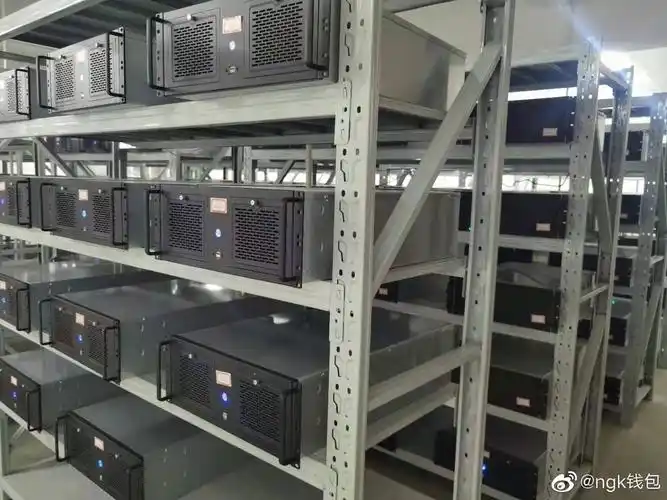Bitcoin mining, once the realm of hobbyists crunching numbers in their basements, has now evolved into a colossal industry dominated by sophisticated mining rigs and sprawling mining farms. This transformation, while lucrative, casts a looming shadow—the darker side of Bitcoin mining that investors and enthusiasts alike must heed. Beyond the allure of substantial profits lies a labyrinth of risks threatening to erode gains, disrupt operations, and even jeopardize the very future of mining enterprises.
At the heart of Bitcoin mining’s risk matrix is the volatility intrinsic to cryptocurrency markets. Prices of Bitcoin (BTC) can oscillate drastically within hours, influenced by global economic shifts, regulatory news, or even social media storms. For miners, whose profitability hinges on the coin’s current value and mining difficulty, such fluctuations can render operations suddenly unviable. Imagine an expensive ASIC mining rig consuming vast amounts of electricity suddenly chasing profits that vanish in a crypto market downturn, a predicament that can push mining farms into precarious financial zones.
Another critical hazard is the ever-increasing mining difficulty. The Bitcoin network adjusts its cryptographic puzzle every 2016 blocks, roughly every two weeks, ensuring blocks are mined at a steady rate regardless of changes in total computational power. While this maintains the network’s integrity, rising difficulty translates directly into higher energy consumption and lengthened return periods on hardware investments. For hosted mining machines, this means clients must remain vigilant, as their wallets might thin out faster than anticipated without regular recalibration of strategy and upgrades.

Energy consumption—a paradoxical Achilles’ heel of Bitcoin mining—cannot be overlooked. Mining rigs, especially those processing SHA-256 hashes like Bitcoin miners, guzzle enormous amounts of electricity. Escalating energy costs and environmental concerns have culminated in stricter regulations worldwide. Some jurisdictions threaten shutdowns or impose hefty tariffs, shrinking mining margins overnight. For businesses specializing in mining machine hosting, power costs and grid reliability become crucial variables. Hosting providers face the challenge of balancing energy efficiency with maximizing hash rates to sustain client profitability.
The technological arms race intensifies the risk landscape. With rapid hardware innovation, older mining machines depreciate swiftly. For instance, new-generation ASIC miners boasting dramatically improved hash power can make previously purchased rigs obsolete. This churn compels miners to continuously reinvest in cutting-edge machines or risk lagging behind competitors. Moreover, the scarcity and soaring prices of high-demand components can disrupt supply chains, creating bottlenecks for both buyers of mining machines and providers of hosting services eager to scale infrastructure.
Security vulnerabilities add another dimension to these risks. Cryptocurrencies being digital assets, mining operations are tempting targets for cyberattacks. Malware aimed at hijacking mining rigs or ransomware attacks on data centers can stall operations, leading to significant financial losses. Mining hosting providers must implement stringent cybersecurity protocols and regular hardware monitoring to mitigate these threats, safeguarding both their assets and their clients’ interests.
Amid these technical and operational risks, regulatory uncertainty remains an overarching specter. Countries vary dramatically in their stance toward cryptocurrency mining: some embrace it with incentives, while others impose outright bans or onerous compliance requirements. Sudden policy shifts—such as China’s sweeping ban on cryptocurrency mining—have led to massive relocations of mining farms and stranded equipment, trembling in the wind of legal ambiguity. For companies selling mining machines and providing hosting, adaptability and geopolitical awareness become indispensable competitive advantages.

Diversification within the mining ecosystem also invites nuanced risks. While Bitcoin commands the lion’s share of market capital and hash power, alternative cryptocurrencies such as Ethereum (ETH) or Dogecoin (DOG) offer different opportunities but come with different protocols and mining algorithms. Investing heavily in BTC-exclusive hardware might present risks if mining alternative coins or engaging with exchanges offering diverse tokens gains traction. Fluctuations in altcoin popularity can redirect mining efforts, potentially affecting profitability and equipment utility. Hosting providers might need to support multiple mining algorithms to stay competitive in the face of such shifting tides.
Furthermore, the intense competition among miners often leads to large-scale mining farm consolidations, concentrating hash power and inviting concerns over decentralization. Such centralization risks, in theory, threaten the very foundation of blockchain’s trustless and distributed nature. For stakeholders in the mining machine and hosting sectors, this evolving power dynamic introduces complex strategic and ethical considerations beyond raw profitability.
In sum, the dark side of Bitcoin mining embodies a myriad of interlinked risks—volatile markets, rising difficulty, energy challenges, rapid technological obsolescence, cybersecurity threats, regulatory uncertainty, and the complex dance between different cryptocurrencies. Entrepreneurs and miners must navigate this complex maze with foresight, agility, and diversified strategies to protect and enhance their profits. For companies specializing in selling and hosting mining machines, understanding and mitigating these multifaceted risks is not just prudent; it’s essential for long-term survival in an industry that is as volatile as it is promising.




Leave a Reply